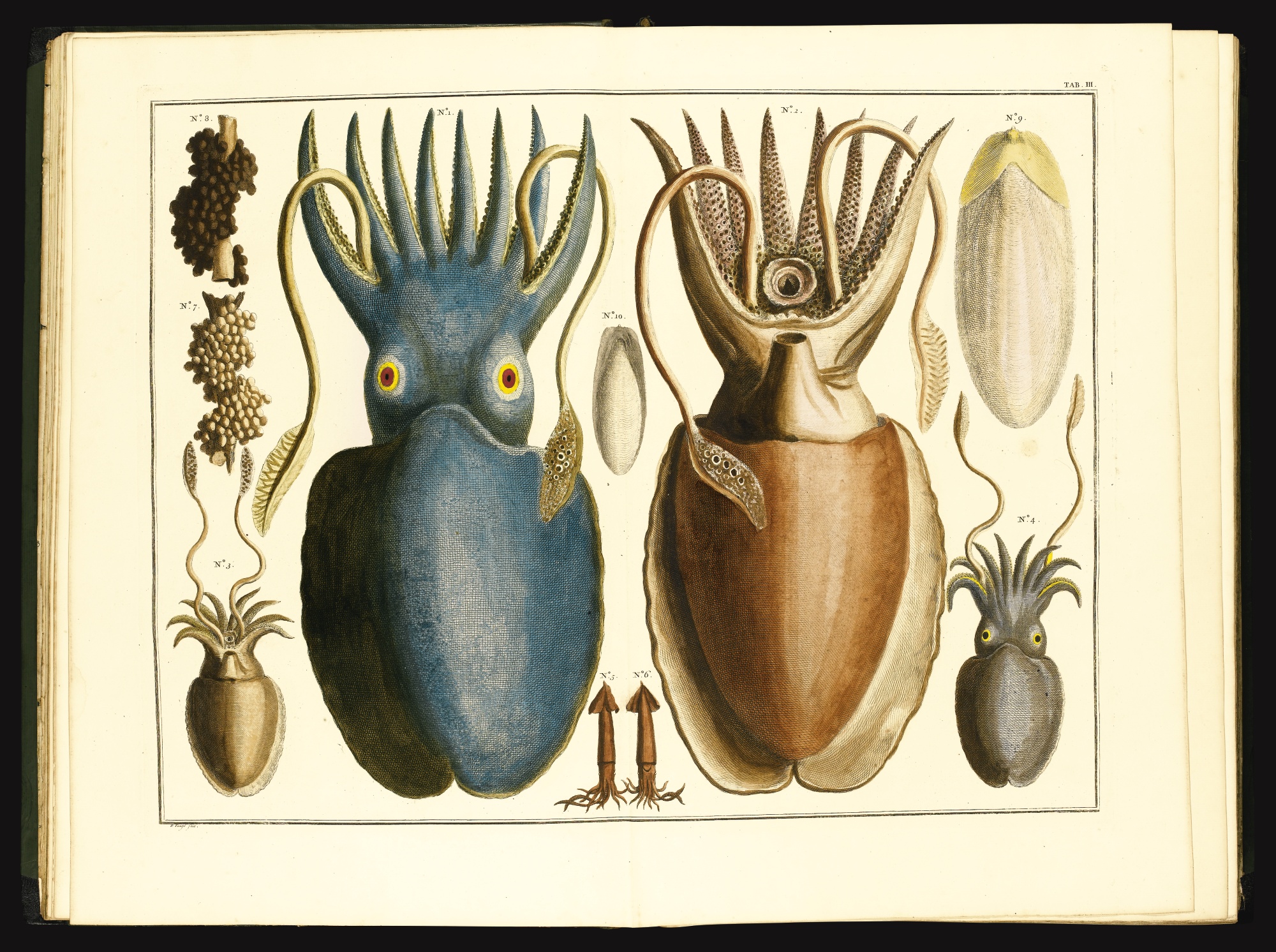We have never done this before (animal etchings?) but when I saw this etching I knew it must be featured in DailyArt :) It is beautiful! Enjoy :)
This hand-colored etching is of the Malacca Hedgehog, said to have been first described by Albertus Seba. It is pictured with long spines and pendulous ears. At the top of the left page are two young hedgehogs playing, one on its back. Equally compelling is the colored etching of the Ostrich. These two dominate the double-paged illustration. There is a tropical bird with blue and green plumage in the picture, as well as some decorative ostrich eggs typical of 18th-century art. One of at least ten artists working for Seba during this period drew this illustration and transferred it to the copperplate for etching. The artist etched the drawing with precision to produce black and white plates. The plate was printed on linen rag paper. Artists were commissioned by Albertus Seba to draw from his collection of curiosities. Apart from a few anomalies, for example, the seven-headed hydra, the drawings were of real specimens and a meticulous scientific approach was expected of the artist. In line with the practice of the early 18th century there is an element of the exotic to the plates, and, at times, unrelated specimens are placed together for dramatic effect. Seba had an artistic eye and was directly involved in the arrangement of the elements on the page. Wealthier members of society could have their copy of the Thesaurus painted by a hand-colorist, as is shown here. Hand-colouring was also a valuable way of differentiating the specimens, as Seba's text did not always allude to color. The beautiful artwork was accompanied with a written description by Seba, this text being produced in collaboration with important scientists of the time. The result is one of the 18th century's most outstanding works on natural history.


 Albertus Seba
Albertus Seba